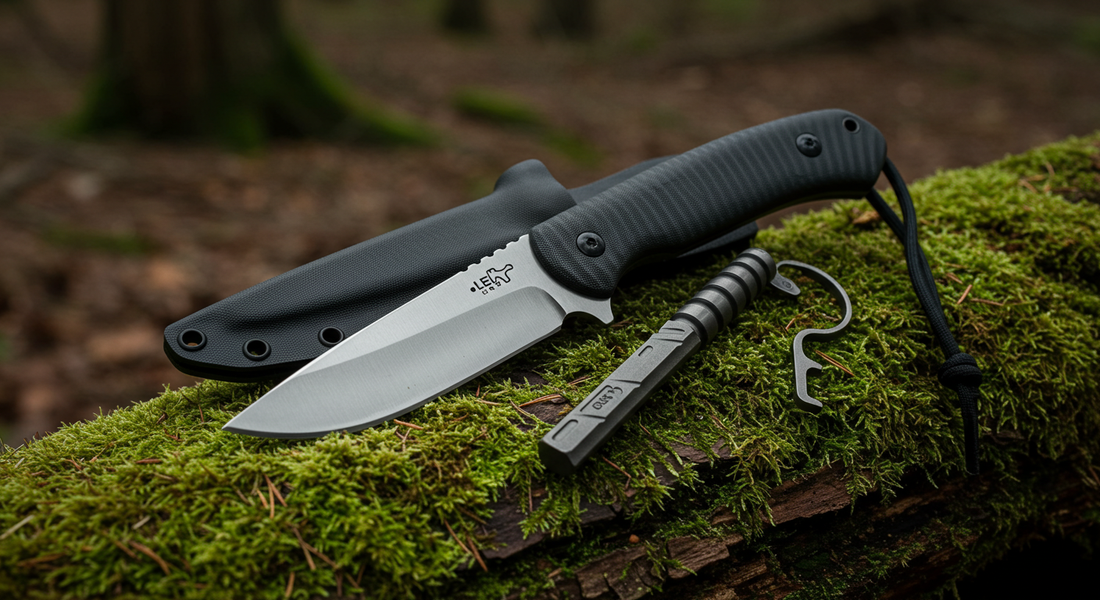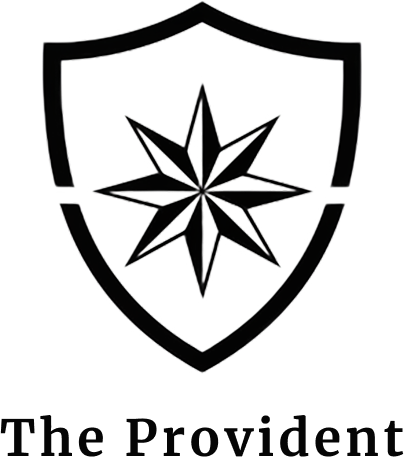
How to Choose Your First Fixed-Blade Survival Knife
Share

In any prepper's kit, among all the gadgets and gear, one tool stands above the rest in terms of raw utility and importance: the fixed-blade knife. While a multi-tool is excellent for repairs and a folding knife is convenient for small daily tasks, a quality fixed-blade is your workhorse. It's the tool you'll rely on for tough jobs like batoning wood, building a shelter, preparing food, and even for self-defense. This fixed blade knife guide will walk you through the essentials of how to choose a survival knife, ensuring you invest in a tool that won't fail when you need it most.
Anatomy of a Survival Knife
Not all knives are created equal. Understanding the key parts of a fixed-blade will help you identify a quality tool.
-
Tang: This is the most critical factor for strength. The tang is the part of the blade that extends down into the handle. A full tang means the steel is a single, solid piece that runs the full length and width of the handle. This makes the knife incredibly strong and is the only type you should consider for a true survival knife. Partial tangs are weaker and can break under heavy stress.
-
Blade Geometry: The shape of the blade determines its performance. For a versatile best survival knife, a drop point blade is the most recommended. It has a strong, controllable point and a generous "belly" for slicing. Other shapes like the tanto have an exceptionally strong tip for piercing but are less suited for general-purpose tasks.
-
Pommel and Handle: The pommel is the very end of the handle. On a full-tang knife, this is an exposed piece of steel that can be used for hammering or breaking things. The handle itself should be comfortable and provide a secure grip, even when wet.
Understanding Blade Steel
The type of steel used for the blade is a deep and complex topic, but for a beginner, it boils down to two main categories. Understanding survival knife steel types is key.
-
Carbon Steel (e.g., 1095):
-
Pros: It's incredibly tough, meaning it resists chipping and breaking. It's also very easy to sharpen in the field, and it will throw a spark when struck with a ferrocerium rod, making it a fire-starting tool.
-
Cons: Its main weakness is its low chromium content, which means it can rust easily if not properly oiled and cared for.
-
-
Stainless Steel (e.g., S30V, Sandvik, 440C):
-
Pros: High chromium content makes it highly resistant to rust and corrosion, requiring less maintenance.
-
Cons: It can be more brittle than carbon steel and is often much harder to sharpen, which can be a significant issue in the field without proper sharpening equipment.
-
For a first survival knife, a high-carbon steel like 1095 is often recommended due to its toughness and ease of sharpening.
Handle and Sheath Considerations
How a knife feels in your hand and how you carry it are just as important as the blade itself.
-
Handle Materials: Micarta (made from layers of fabric in resin) and G10 (fiberglass in resin) are two of the best options. They are extremely durable and provide excellent grip, even in wet conditions. Rubber handles are also comfortable and grippy but may be less durable over the long term.
-
Sheath Types: The sheath protects you and the blade. Kydex is a modern, molded thermoplastic that is waterproof, durable, and provides excellent retention. Leather is the classic choice, offering a quiet draw and traditional aesthetic, but it can absorb moisture and rot if not cared for.
Top 3 Recommendations for Beginners
-
The Budget Workhorse (Under $75): Look for a knife with a full tang, 1095 carbon steel, and a simple Micarta or rubber handle. It won't be fancy, but it will be tough, reliable, and easy to maintain.
-
The All-Rounder (Under $150): In this price range, you'll find excellent options with premium features. Expect a well-designed drop point blade, perhaps in a slightly more advanced carbon steel, paired with ergonomic G10 handles and a high-quality Kydex or leather sheath.
-
The Premium Performer ($150+): Here you enter the world of "super steels" like S30V or CPM-3V, which offer an exceptional balance of toughness, edge retention, and corrosion resistance. These knives are built to be lifelong companions.
Conclusion
Choosing your first fixed-blade knife is a long-term investment in your safety and preparedness. It's more than just a tool; it's a lifeline. But remember, the best knife in the world is useless without the knowledge to back it up. Once you've made your choice, the most important step is to practice with it. Learn how to use it safely, how to care for it, and, most importantly, how to keep it razor-sharp. A well-chosen and well-maintained knife will serve you for a lifetime.
